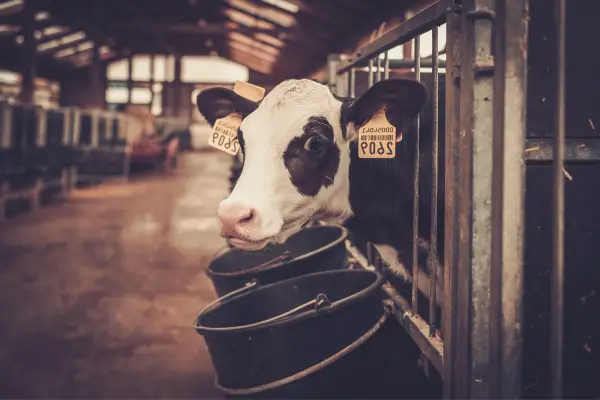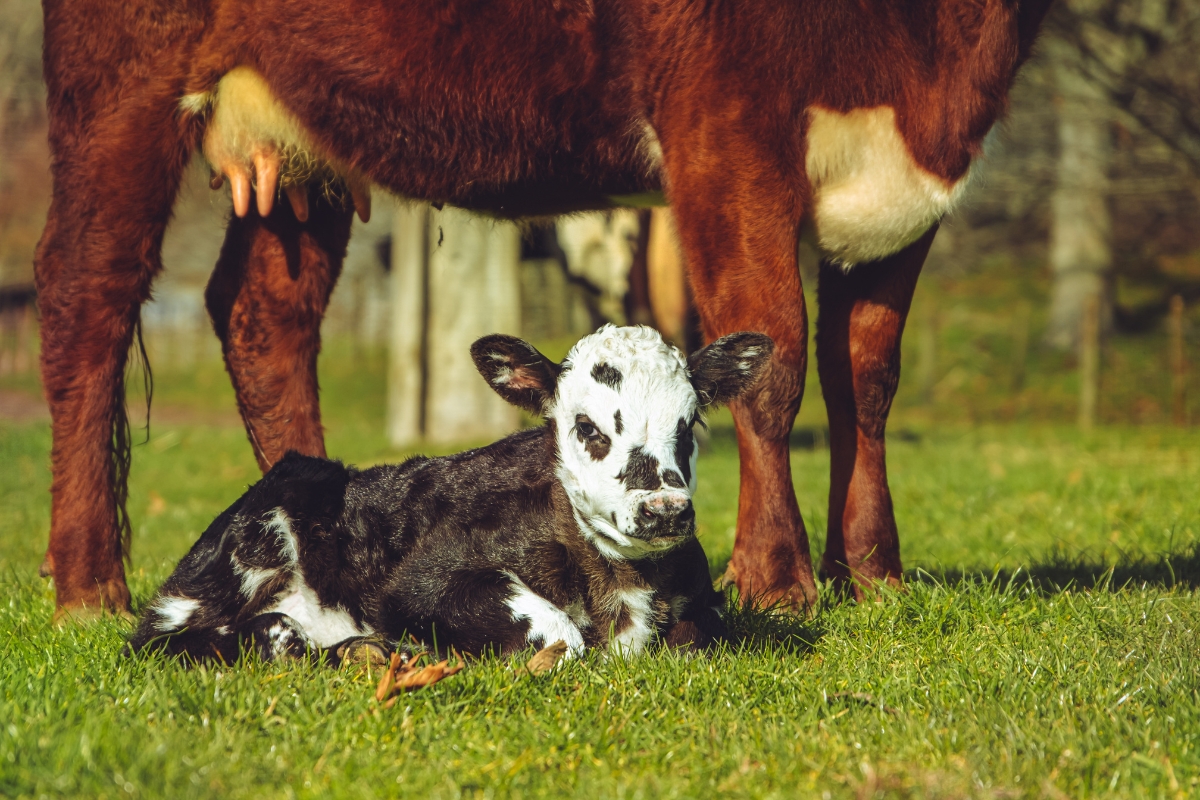Calving Season Management Tips
The calving season is one of the most critical times of the year for beef and dairy cattle operations. Proper management during this period can get the calves off to a healthy start and set the foundation for optimum growth and productivity.
With some planning and preparation, producers can help ensure the safety and welfare of both cows and calves while also facilitating an efficient calving process. In this blog article provides tips and best practices for managing your herd during the calving season.
Getting Ready for Calving Season
The work for the next calving season begins right after the current one ends. Here are some tips to prepare:
- Review records from the last season – number of calves born, calf losses, dystocia cases, cow body condition changes etc. Identify areas for improvement.
- Analyze nutritional needs and ensure cows are on track to achieve the target body condition score before calving. Aim for a score of 5-6 on a 9-point scale.
- Vaccinate cows pre-calving, especially for scours-causing pathogens like rotavirus, coronavirus etc. Ensure optimum colostrum intake for calves.
- Prepare calving facilities – individual/group pens, calf hutches, and equipment like calf pullers, scales, ear taggers etc. Designate an area for calving supplies.
- Strategize labour needs and calf monitoring schedules. Night checks may be required when most calves are due.

Optimizing the Calving Environment
The location and setup of calving facilities can significantly impact the success rate during this critical period. Here are key tips for optimizing the calving area:
- Choose a clean, dry calving area with minimum environmental disturbances. Avoid muddy, wet, or flooded zones which increase risk of calf pneumonia or scours. Select a pasture that is higher elevation, sandy, and has good drainage.
- Ensure adequate space for each cow-calf pair post-calving, about 400-600 square feet per head. Overcrowding causes social stress, decreases feed intake, and increases disease transmission.
- Group first-calf heifers separately from mature cows in a designated calving pasture or pens. This allows the younger females undisturbed time and space to bond with calves, gain mothering experience, and reach maximum feed intake.
- Construct deep-bedded individual pens or calf hutches for actual birthing whenever possible. Deep bedding absorbs moisture, keeps the pair clean and dry, and reduces naval infections in calves. Hutches also protect vulnerable newborns from harsh weather.
- Designate a safe, specialized area for calving assistance with needed restraint equipment readily available. This facilitates providing timely help for difficult births while minimizing stress to the cow. Headgates, calf pullers, OB chains etc may be required.
Effective Nutrition and Health Programs Pre-Calving
Strategic supplementation and health protocols for brood cows in late gestation can significantly impact productivity. Useful guidelines include:
- Address protein and mineral deficiencies 90 days pre-calving based on forage testing and diet formulation. Crude protein should meet requirements while calcium, phosphorous, selenium, copper, zinc and other minerals must be balanced.
- Increase energy density of ration during the last 60 days leading up to calving to accommodate the exponential fetal growth phase. Ensure adequate feed bunk space so late-gestation cows can maximize dry matter intake.
- Confirm optimum trace mineral and vitamin status before calving through blood testing and diet analysis. Key nutrients are selenium, copper, zinc, Vitamin A, Vitamin E etc. Bolster any deficiencies found.
- Develop strategic vaccination schedules for scours, pneumonia and other endemic diseases in consultation with the herd veterinarian. Time injections to maximize colostral antibody transfer achieving early immunity for calves.
- Implement pre-calving deworming protocol using safe products for pregnant cattle. This reduces the parasite burden and allows effective colostral antibody transfer to the calf through the cow’s elevated immune system response.
- Adapt supplementation programs and health products for thinner cows or first-calf heifers as compared to healthy mature cows. Address deficiencies more aggressively in these vulnerable groups.

The Calving Process Itself
When the calving finale arrives, adhere to these best practice guidelines:
- Check cows showing early labor signs like vaginal discharge, full udder, and isolation seeking. But allow them complete privacy to bond during the actual birthing process. Only intervene if abnormal progress, positioning, or maternal distress calls for assistance.
- Closely monitor at-risk animals like first-calf heifers or those with prior dystocia history. Foresee challenges and make preparations for possible calving intervention. Have staff and equipment ready.
- Allow natural maternal behaviors like licking of calves to stimulate respiration and circulation. The sniffing, grooming, and nursing processes right after birth are vital for bonding, colostrum absorption, etc.
- Dip the newborn calf’s navel with 7% tincture of iodine immediately after calving and at least 2 more times daily until fully dried up. This prevents bacterial invasion causing joint-ill and systemic infections.
- Use Brix refractometer to measure colostrum antibody concentration within 2 hours after calving. Target Brix reading is 22% or higher to ensure sufficient IgG mass for early calf immunity before gut closure.
- Milk out high quality colostrum within 4-6 hours of calving to feed calves via bottle if natural nursing is delayed. Freeze surplus colostrum in sanitized containers for future use when needed.
Protocols for Newborn Calves
Consistently implementing science-based newborn protocols is vital for ensuring calf welfare and performance. Key guidelines include:
- Identify calves immediately with sequentially numbered ear tags. Also record within herd software the dam ID, birth weight, date/time, and other details on each new arrival.
- Administer time-sensitive vaccines for pathogens like roto-coronavirus, pneumonia bacteria, clostridia etc. according to veterinary guidance. Build early protection before marketing.
- Ensure newborns nurse high quality maternal colostrum (Brix > 22%) within 2-4 hours post-calving. Target cumulative intake is 4 quarts in the first 12 hours while gut absorption is still possible.
- Apply 7% iodine again to calf navels if not done immediately after birth. Reapply daily until cord stump is hard, dry, and shriveled – no raw surface remains.
- House calves in clean, dry, draft-free facilities with deep bedding from Day 1. Provide individual hutches or pens initially then group housing at around 4 weeks of age onwards.
- Monitor temperature, nasal and eye discharges, coughing, fecal consistency, eating/drinking patterns, etc. Identify and treat any emerging illness promptly within the first weeks of life.
With apt preparation, diligent monitoring, and implementation of optimal nutrition and health programs, cattle producers can set their calves up for maximized survival and performance during the critical calving season. Partnering with qualified veterinary and nutrition experts is key to dialling in effective protocols for each operation.


